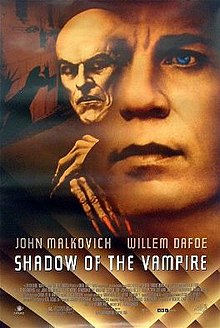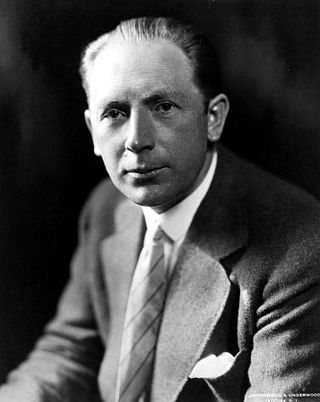
Friedrich Wilhelm Murnau was a German film director, producer and screenwriter. He is regarded as one of cinema's most influential filmmakers for his work in the silent era.

Nosferatu: A Symphony of Horror is a 1922 silent German Expressionist vampire film directed by F. W. Murnau and starring Max Schreck as Count Orlok, a vampire who preys on the wife of his estate agent and brings the plague to their town.

William James "Willem" Dafoe is an American actor. Known for his prolific career portraying diverse roles in both mainstream and arthouse films, he is the recipient of various accolades, including the Volpi Cup for Best Actor as well as nominations for four Academy Awards, a BAFTA Award, and four Golden Globe Awards. He has frequently collaborated with filmmakers Paul Schrader, Abel Ferrara, Lars von Trier, Julian Schnabel, Wes Anderson, and Robert Eggers. Dafoe was a founding member of experimental theater company The Wooster Group.
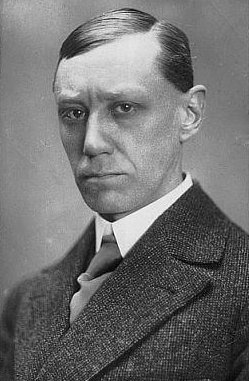
Friedrich Gustav Maximilian Schreck, known professionally as Max Schreck, was a German actor, best known for his lead role as the vampire Count Orlok in the film Nosferatu (1922).

Count Orlok, commonly but erroneously known as Nosferatu, is a fictional character who appears in the silent film Nosferatu, eine Symphonie des Grauens (1922) and in its remake Nosferatu (2024), which is based on Bram Stoker's character Count Dracula.
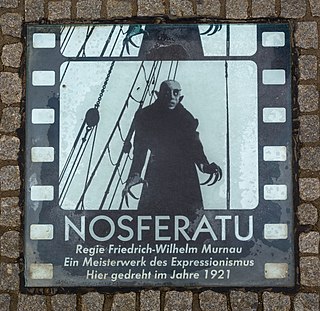
Albin Grau was a German artist, architect and occultist, and the producer and production designer for F.W. Murnau's Nosferatu (1922). He was largely responsible for the look and spirit of the film, including the sets, costumes, storyboards and promotional materials.

Vampire films have been a staple in world cinema since the era of silent films, so much so that the depiction of vampires in popular culture is strongly based upon their depiction in films throughout the years. The most popular cinematic adaptation of vampire fiction has been from Bram Stoker's 1897 novel Dracula, with over 170 versions to date. Running a distant second are adaptations of the 1872 novel Carmilla by Sheridan Le Fanu. By 2005, the Dracula character had been the subject of more films than any other fictional character except Sherlock Holmes.

Nosferatu the Vampyre is a 1979 gothic horror film written and directed by Werner Herzog. It is set primarily in 19th-century Wismar, Germany and Transylvania, and was conceived as a stylistic remake of F. W. Murnau's 1922 German Dracula adaptation Nosferatu. The picture stars Klaus Kinski as Count Dracula, Isabelle Adjani as Lucy Harker, Bruno Ganz as Jonathan Harker, and French artist-writer Roland Topor as Renfield. There are two different versions of the film, one in which the actors speak English, and one in which they speak German.

Vampires are frequently represented in popular culture across various forms of media, including appearances in ballet, films, literature, music, opera, theatre, paintings, and video games.
Der Golem is a partially lost 1915 German silent horror film written and directed by Paul Wegener and Henrik Galeen. It was inspired by a Jewish folktale, the most prevalent version of the story involving 16th century Rabbi Judah Loew ben Bezalel who created the Golem to protect his people from antisemites. Wegener claimed the film was based on Gustav Meyrink's 1915 novel The Golem, but, as the movie has little to do with existing Jewish traditions, Troy Howarth states "it is more likely that simply drew upon European folklore".
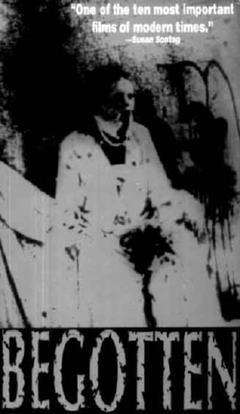
Begotten is a 1989 American experimental silent horror film written, directed, and produced by E. Elias Merhige. It stars Brian Salsberg, Donna Dempsy, Stephen Charles Barry, and members of Merhige's theatre company, Theatreofmaterial. Its unconventional narrative depicts the suicide of a godlike figure and the resulting births of Mother Earth and the Son of Earth, who set out on a journey across a barren landscape. The film does not contain dialogue, with its visual style evoking early silent films.

Gustav von Wangenheim was a German actor, screenwriter and director.
Boo! is a 1932 American Pre-Code comedy short film by Universal Pictures, directed and written by Albert DeMond. Boo! contains clips of horror films Nosferatu (1922), The Cat Creeps (1930), and Frankenstein (1931), mocking them thoroughly.

Greta Schröder was a German actress. She is best known for the role of Thomas Hutter's wife and Count Orlok's victim in Nosferatu (1922). In the fictionalized 2000 film Shadow of the Vampire, she is portrayed as having been a famous actress during the making of Nosferatu, but in fact she was little known. The bulk of her career was during the 1920s, and she continued to act well into the 1950s, but by the 1930s her roles had diminished to only occasional appearances. Following a failed marriage with struggling actor Ernst Matray, she was married to actor and film director Paul Wegener.
Fanny Schreck, also known as Fanny Schreck-Normann, was a German actress. She was married to actor Max Schreck. Both husband and wife acted in their most well-known film, Nosferatu, with Fanny Schreck uncredited as the nurse and Max Schreck as the vampire Count Orlok.
Fritz Arno Wagner is considered one of the most acclaimed German cinematographers from the 1920s to the 1950s. He played a key role in the Expressionist film movement during the Weimar period and is perhaps best known for excelling "in the portrayal of horror," according to noted film critic Lotte H. Eisner.
The 27th Saturn Awards, honoring the best in science fiction, fantasy and horror film and television in 2000, were held on June 12, 2001 at the Park Hyatt Hotel in Century City, Los Angeles. The nominees were announced on April 4, 2001.
Thomas Hutter is a fictional character in the silent expressionist horror film Nosferatu, eine Symphonie des Grauens (1922), its remake Nosferatu the Vampyre (1979)(renamed as Jonathan Harker) and its second remake Nosferatu (2024).
Orian Williams is an American film producer. Williams is best known for the Oscar and Golden Globe-nominated Willem Dafoe/John Malkovich film Shadow of the Vampire, as well as the BIFA-winning Control, an Ian Curtis biopic which also received multiple Cannes and BAFTA awards.

Nosferatu is an upcoming American gothic horror film written and directed by Robert Eggers, and starring Bill Skarsgård as the titular vampire. Following Werner Herzog's Nosferatu the Vampyre (1979) and David Lee Fisher's Nosferatu: A Symphony of Horrors (2023), it is the third remake of the 1922 German Expressionist film of the same name written by Henrik Galeen and directed by F. W. Murnau, which in turn is an "unauthorized and unofficial" adaptation of Bram Stoker's 1897 novel Dracula.
